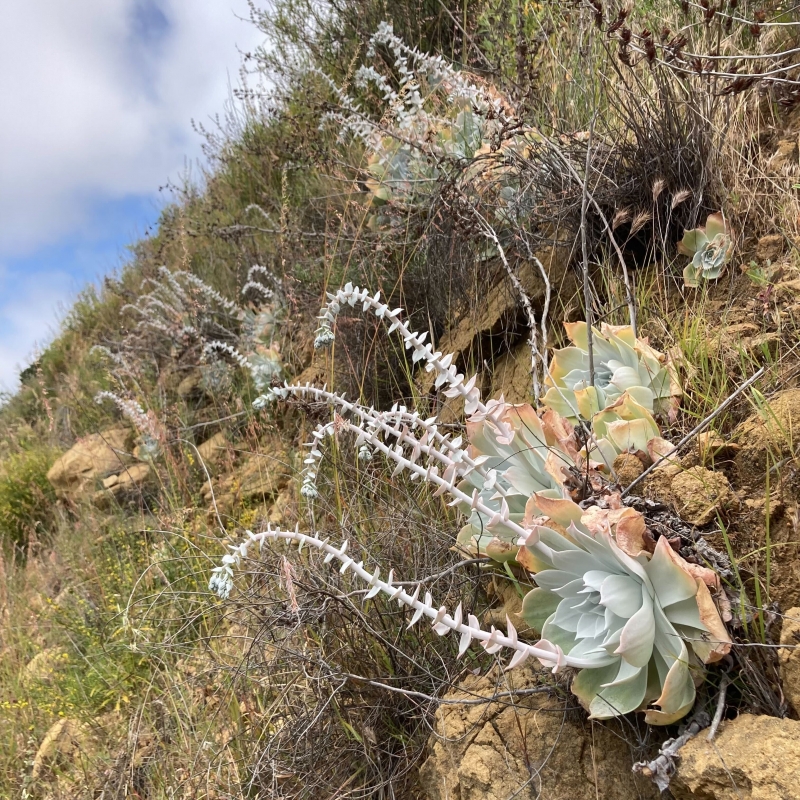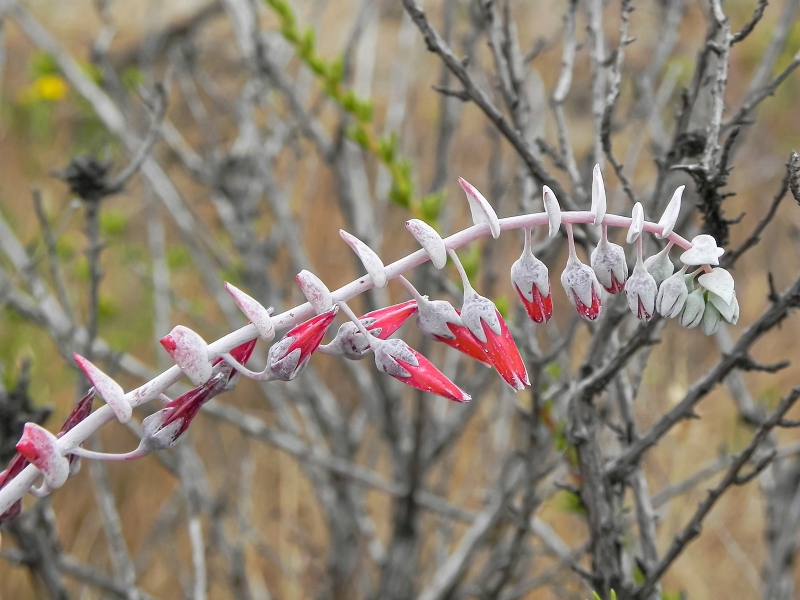



| height | 8–20in | |
| width | 8–20in | |
| tolerates | Coast, Cold, Drought, Deer , Gophers, Heat, Pots, Rooftops, Neglect, Salt, Wind | |
| water needs |
Lowest | |
| water info |
This winter growing succulent, thrives with only rainfall within its native range. It will tolerate some light summer watering to keep it plump, say once a month, but typical wet to dry succulent watering during summer will kill this plant. Preferably, allow it to go through its natural cycle of leaf attrition, where the crown will shrivel up, appearing almost ‘dead’ during summer only to explode into growth with winter rains. If rains fail water monthly from fall through spring. | |
| hardy to |
20F | |
| exposure | Part Shade – Full Sun | |
| indoor outdoor |
Outdoor | |
| drainage | In Ground: Cactus Mix, In Pots: Cactus Mix, Tolerates Sandy Soil | |
| fertilizing | Low Needs | |
| origin | California | |
| california native |
Yes | |
| sunset zones |
14–24 |
Full Sun
Six or more hours of sun beams directly landing on the plant's leaves.
Part Shade
Three to five hours of sun beams directly landing on the plant's leaves.
Part Sun
One to two hours of sun beams directly landing on the plants leaves.
Full Shade
The plant is never fully lit by sun beams,
but is in a bright spot or has dappled sunbeams playing over the leaves throughout the day.
Deep Shade
The plant never has dappled light on the leaves, and is in a place that feels dim, even on a nice sunny day.
